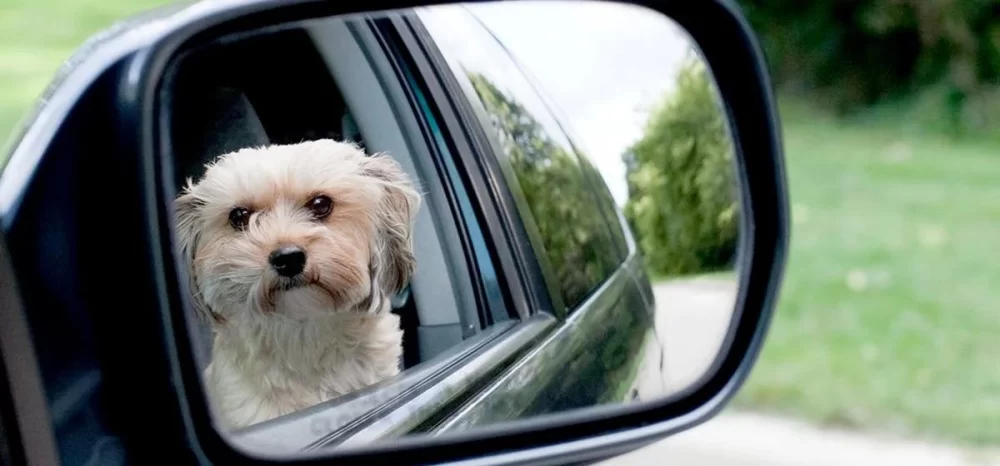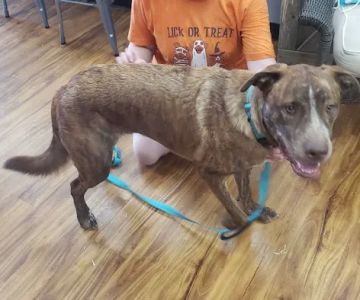How to Train Your Dog to Stop Chasing Its Own Reflection
If you’ve ever watched your dog become completely captivated by its own reflection in a mirror or window, you’re not alone. It’s a strange and often frustrating behavior that can leave dog owners wondering how to stop it. I’ve experienced this firsthand with my dog, Daisy, who seemed to think that every mirror or shiny surface was a new playmate. It wasn’t just cute—it was disruptive and, at times, embarrassing. But with some consistent training, I was able to help her break the habit. If your dog is chasing its own reflection, there are several steps you can take to stop this behavior. In this article, I’ll share the strategies that worked for Daisy and how you can implement them with your own dog.

1946 S Christopher Columbus Blvd, Philadelphia, PA 19148, USA
See DetailsWhy Do Dogs Chase Their Own Reflection?
The first step in addressing this behavior is understanding why dogs chase their own reflection in the first place. While it might seem like a silly habit, dogs aren’t chasing their reflection out of vanity. In fact, they likely don’t even realize that it’s their own reflection. Dogs are highly visual creatures, and shiny surfaces can attract their attention. Reflections may confuse them, making them think there’s another animal or person they need to interact with.
When Daisy first started chasing her reflection, I wasn’t sure how to respond. It seemed harmless at first, but over time, the behavior became more persistent. I learned that this is a form of obsessive-compulsive behavior that can be triggered by a variety of factors—such as boredom, anxiety, or even just curiosity. By understanding the cause of the behavior, I was able to address it more effectively.
Step 1: Redirect Your Dog’s Focus
The first and most important step in breaking the cycle of reflection chasing is to redirect your dog’s focus. Dogs, especially those like Daisy who are high-energy, need an outlet for their attention. I found that the best way to do this was by providing an alternative, positive activity every time Daisy started to chase her reflection. Instead of allowing her to focus on the reflection, I would call her name and immediately offer a toy or engage her in a game of fetch. This helped her realize that there are more rewarding activities than chasing reflections.
During training, it’s crucial to be consistent. Every time your dog starts to get fixated on its reflection, try to redirect its focus toward something positive. With practice, your dog will begin to associate these shiny surfaces with positive activities rather than obsessing over them.
Step 2: Provide Mental and Physical Stimulation
One reason dogs may chase reflections is boredom or a lack of stimulation. I realized that Daisy was spending too much time inside and not getting enough mental or physical exercise. To combat this, I made sure to increase her daily walks and provide her with interactive toys that challenged her brain. Puzzle feeders, treat-dispensing toys, and even training sessions helped keep her mind occupied.
If your dog is constantly seeking stimulation from its environment, it’s important to ensure that they’re getting enough of it. Dogs need both physical and mental exercise to be happy and healthy. By tiring your dog out with regular walks, playtime, and mentally stimulating activities, you’ll likely see a reduction in behaviors like reflection chasing. A tired dog is far less likely to become fixated on their own image!
Step 3: Create a Calm Environment
If your dog’s reflection-chasing behavior is triggered by anxiety or excitement, it’s important to create a calm and soothing environment for them. Daisy, for example, would often chase reflections when she was feeling stressed, especially when there were loud noises or disruptions in the house. To help her relax, I worked on creating a calm space where she could retreat and unwind. This included setting up a cozy bed in a quiet corner of the house where she could feel safe and secure.
There are also calming aids that can help, such as pheromone diffusers or calming music for dogs. I found that these tools helped Daisy feel more relaxed and less likely to become agitated by the reflection. By minimizing stress and providing a safe space, I was able to reduce Daisy’s need to chase reflections as a way of releasing that built-up energy.
Step 4: Use Positive Reinforcement to Encourage New Behavior
As with all dog training, positive reinforcement is key. When Daisy stopped chasing her reflection and focused on something more productive, I made sure to reward her with praise, treats, and toys. This helped her understand that calm behavior was more rewarding than chasing reflections. I also kept training sessions short and fun to keep her engaged and prevent her from becoming frustrated.
It’s important to remember that training takes time. Daisy didn’t stop chasing her reflection overnight, but with consistent positive reinforcement, she learned that paying attention to me was far more rewarding than focusing on the shiny surfaces around the house.
Step 5: Limit Access to Reflective Surfaces
While you’re working on breaking the reflection-chasing habit, it can help to limit your dog’s access to areas where they can see their reflection. This might mean keeping blinds drawn, covering mirrors, or temporarily moving furniture so your dog can’t see its reflection. By making the environment less stimulating, you can reduce opportunities for your dog to chase its reflection and focus on the positive behaviors you’re trying to reinforce.
Step 6: Be Patient and Consistent
Like all behavior modification, stopping your dog from chasing its own reflection requires patience and consistency. There will be setbacks along the way, and it’s important not to get frustrated. I had to remind myself that Daisy wasn’t being stubborn—she was simply reacting to a behavior that had become a habit. By staying patient and consistently applying the training techniques, I saw steady improvement.
If your dog is struggling with reflection chasing, don’t get discouraged. With time, consistency, and a focus on positive reinforcement, your dog can learn to let go of this behavior. It’s all about redirecting their focus, providing the right kind of stimulation, and creating a calm, supportive environment.











